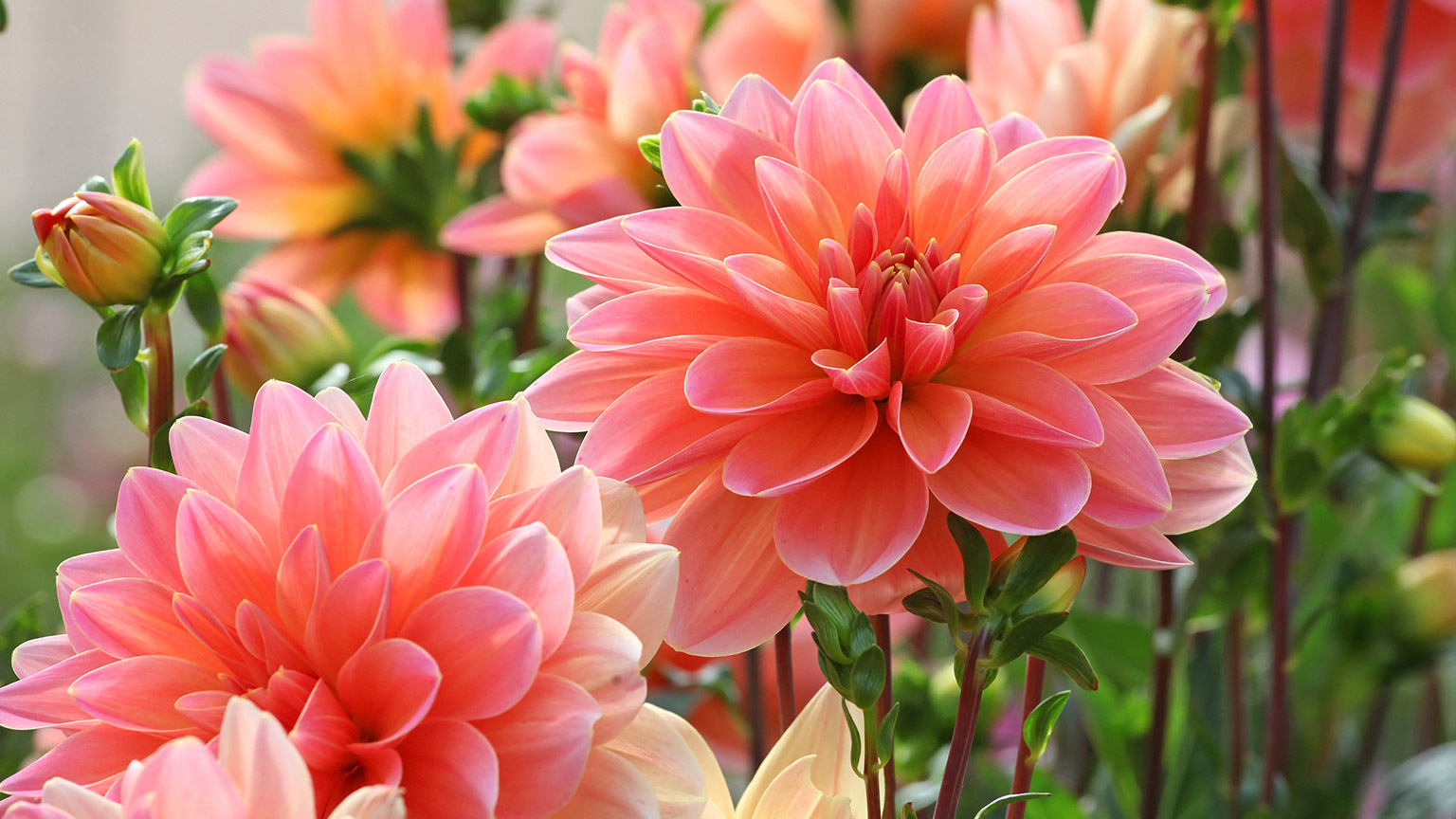Growers can reproduce dahlias (Dahlia spp. and cv) by dividing its tuber style roots.
Let's begin by looking at asexually propagating plants by dividing established plants. There are a number of different approaches to dividing, and these depend on how the plant grows and spreads.
The following table sets out common types of plant division propagation and includes examples of species that can be propagated this way. This information is described well in the book The Plant Propagator's Bible by Miranda Smith.
| Type of division for propagation | Example plants | |
|---|---|---|
| Dividing plants with fibrous root systems | Chrysanthemums (Chrysanthemum spp.) Bellflowers (Campanula spp.) Geraniums (Geranium spp.) Lamb's ear (Stachys byzantia) Ornamental grasses (various) |
|
| Dividing plants with fleshy or woody crowns | Cannas (Canna spp.) Delphiniums (Delphinium spp.) Hellebores (Helleborus spp.) Hostas (Hosta spp.) Lupines (Lupinus spp.) Rengarenga lily (Arthropodium cirratum) |
|
| Dividing suckers – suckers are new plants that form at nodes along the plant's horizontal stems: stolons (above ground) or rhizomes (below ground) | Poplars (Populus spp.) Rugosa rose (Rosa rugosa) Elderberries (Sambucus spp.) Shrub dogwoods (Cornus spp.) |
|
| Dividing plants with rhizomes | Rhubarb (Rheum rhabarbarum) | |
| Dividing plants with tubers | Asparagus fern (Asparagus densiflorus) Dahlias (Dahlias spp. and cv.) Calendiums (Calendium spp.) Canna lilies (Zantedeschia spp.) |
|
| Dividing plants with offsets – offsets are new plants that form on the crown or a stolon of the parent plant | Agaves (Agave spp.) Pineapples (Ananas spp.) Clivias (Clivia spp.) Sago palms (Cycas spp.) Strawberries (Fragaria spp.) Bananas (Musa spp.) Yuccas (Yucca spp.) |
|
| Dividing plants with bulbs and corms | Bluebells (Hyacinthoides spp.) Hyacinths (Hyacinthus orientalis cvs.) Lilies (Lilium spp.) Tulips (Tulipa spp.) |
Rhizomes are continuously growing horizontal underground stems, which puts out lateral shoots and adventitious roots at intervals.
Start by watching the video on Growing Australia (01:53) to watch a grower divide a bearded iris (Iris × germanica).
Now watch this video by Parkrose Permaculture, where Angela shows us a very quick and easy way to divide rhubarb to propagate a new plant. Skip ahead to 5:20 if you don't want the full explanation. While the best practice is to use clean, sharp tools and plants that have been lifted out of the ground, the reality is most plants are pretty robust and can deal with less-than-ideal division techniques.
Learn more:
- The Plant Propagator's Bible, by Miranda Smith, provides a good overview of how and when to divide plants with rhizomes from page 62.
In the next topic, we'll look at how to propagate from cuttings.
